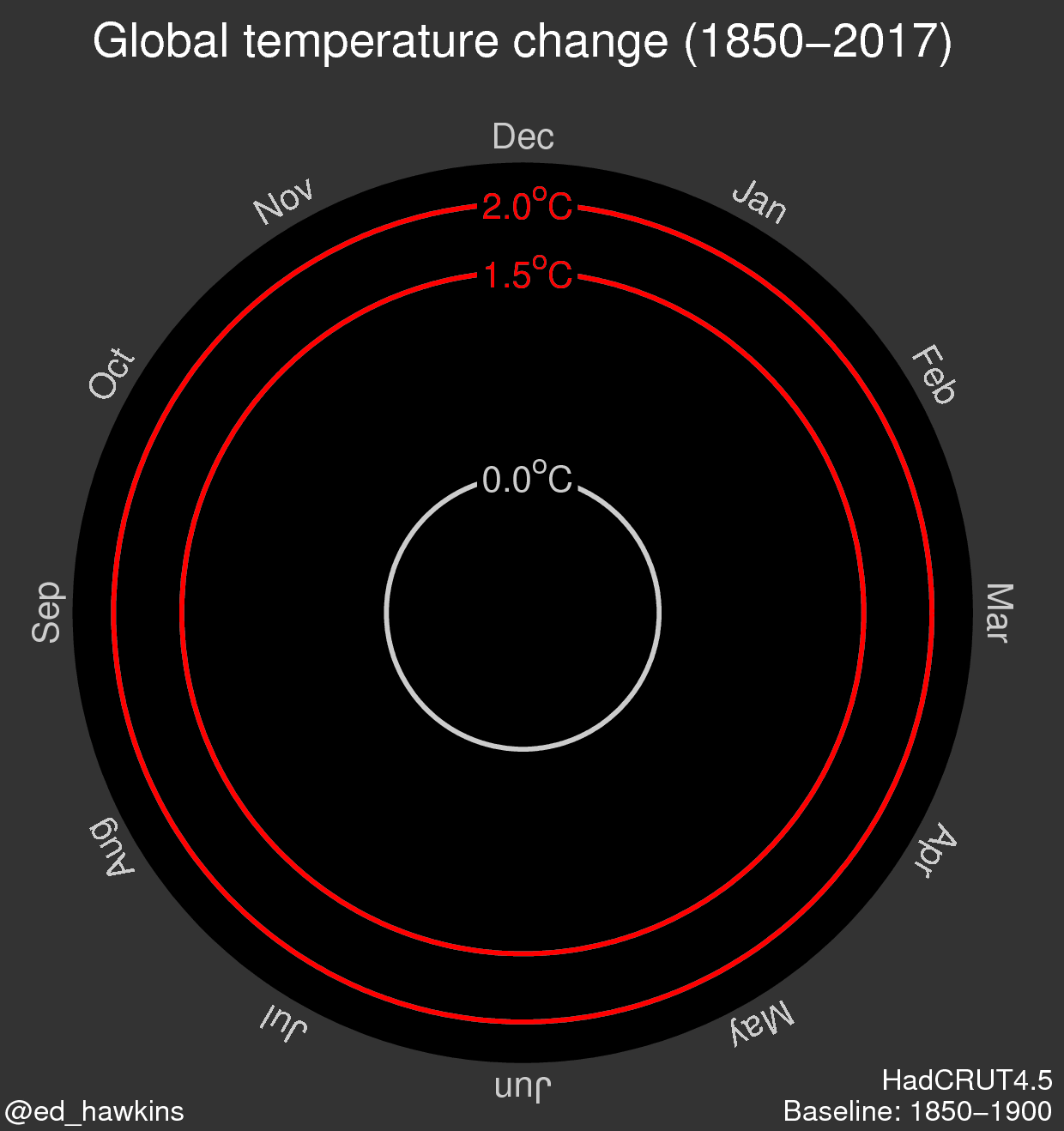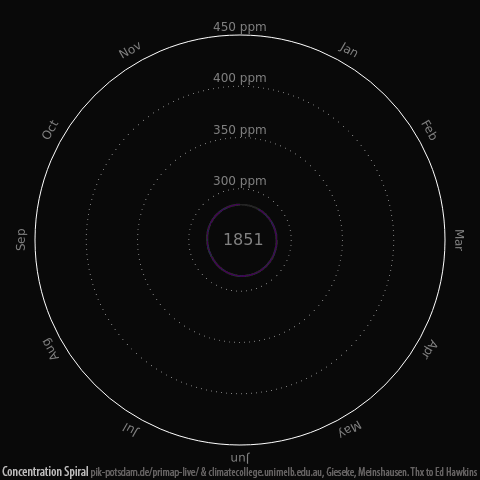What are Greenhouse Gases? Greenhouse Gases (GHG’s) such as carbon dioxide (CO2) and methane (CH4) are gases which, once emitted into the atmosphere, act like a blanket by trapping the sun’s rays as they try to radiate back into outer space as infrared rays. This causes the temperature of our planet to increase. The more GHG’s we emit, the more energy is trapped in our atmosphere increasing extreme weather events.
As our glaciers melt at a faster rate, the amount of sun rays that can be reflected back into space (known as the albedo effect) has diminished, meaning more of the sun’s heat is absorbed by our planet. Another effect of the glaciers melting is that GHG’s such as methane, which have been trapped in the ice for millennia, is now being released, adding more GHG’s to the atmosphere.
Other major effects on our oceans:
- Our oceans absorb 93% of the extra heat caused by climate change and are expanding as a result, contributing towards sea-level rise. It’s also caused by the melting of land-based glaciers in mountain ranges and in Greenland and the Antarctic.
- As the higher rate of freshwater from the melting glaciers is added to the oceans, this is thought to have an effect on oceans currents (known as the ocean conveyor belt), which could slow down the currents which Ireland enjoys coming from the Gulf of Mexico, leading to much colder winters. There is not full scientific consensus on this issue, but it is one which is hoped to have more clarity on in the coming months and years.
- As the oceans absorb about a third of our CO2 emissions, this is changing the chemical make-up of our ocean waters, making them 25% more acidic since the industrial revolution (called ocean acidification) which has the effect of eroding sea crustaceans such as oysters, some plankton and most significantly coral reefs, causing coral bleaching. Coral reefs are home to about 25% of all marine life on Earth.
Are our current GHG levels really a problem though? The world was last this warm about 115,000 years ago when sea level was 6-9 meters (20-30ft) higher than today. The planet has not experienced such high levels of carbon dioxide (CO2) in the atmosphere for 4 million years.
GHG’s are already in the atmosphere naturally, so why are emissions from human activity significant? Human activities have significantly disturbed the natural carbon cycle by extracting long-buried fossil fuels and burning them for energy, thus releasing CO2 into the atmosphere at much larger amounts than has been previously the norm.
How are human-made GHG’s produced? GHG’s are released by burning fossil fuels (coil, oil, gas and peat) which emit CO2 and from the agriculture sector releasing methane and nitrous oxide.
How long will these GHG’s remain in the atmosphere? CO2 last thousands of years in our atmosphere, Methane lasts typically 10 years and Nitrous Oxide lasts for about 100 years.
Are gases the only thing warming our atmosphere? No. Small sooty solids we call particulate matter also have a Greenhouse effect because they are dark and can absorb heat reflected upwards from the surface.
Do these gases have the same global warming potential? If CO2 is given a global warming potential of 1, methane is 28-36 times more potent and nitrous oxide is about 300 times more potent.
What are the main effects of climate change? More extreme weather events like floods, storms and hurricanes, ocean acidification, sea-level rise, forest fires, invasive species, species extinction, ecosystem loss, famine, drought, infrastructure loss and climate refugees.
Has the climate changed before? Yes, the climate has changed historically (i.e. ice ages), the difference now is the rate of change is ten times faster than before.
Is there scientific debate about climate change? 97% of climate scientists agree that climate change is happening at an unprecedented rate and that it is intensified by human activities. Where there is debate, it is of a political nature. The scientific debate has ended – there is overwhelming scientific consensus.
Climate scientists say they are 95 percent certain that human influence has been the dominant cause of global warming since 1950. They’re about as sure of this as they are that cigarette smoke causes cancer.
How do scientists know that recent climate change is largely caused by human activities? Direct measurements of CO2 in the atmosphere, and air trapped in ice, show that atmospheric CO2 increased by about 40% from 1800 to 2012. Measurements of different forms of carbon reveal that this increase is due to human activities.
When is climate change expected to begin? Climate change has already begun, with an annual average of 21.5 million people being forcibly displaced by weather-related sudden onset hazards – such as floods, storms, wildfires, extreme temperature – each year since 2008.
Is the sun causing the climate to change? No, in the last 35 years of global warming, the sun has shown a slight cooling trend. Sun and climate have been going in opposite directions. In the past century, the Sun can explain some of the increase in global temperatures, but a relatively small amount.
Is the planet not cooling? The 10 hottest years ever recorded have all occurred since 1998. The hottest year on record is 2016. It broke the record set in 2015, which itself broke the record set in 2014. According to the World Meteorological Organisation, we are now in “truly unchartered territory”.
But why is it often still cold then? Climate change affects the world in different places and in different ways. With extra heat and water vapour in the atmosphere, there is more energy, which is generating more extreme and more frequent weather events. For example, parts of the world that experience drought, will experience it more so and parts of the world that experience storms and flooding will experience these events more often too.
If the world is warming, why are some winters and summers still very cold? Global warming is a long-term trend, but that does not mean that every year will be warmer than the previous one. Day-to-day and year-to-year changes in weather patterns will continue to produce some unusually cold days and nights, and winters and summers, even as the climate warms overall.
Is there a difference between weather and climate? Yes, weather changes from moment to moment and day to day, whereas climate is an average of weather patterns over a longer period of time, at least over a 30 year period.
Is the hole in the ozone layer related to climate change? The ozone hole and climate change are largely two separate issues, although ozone is a GHG. The “ozone hole” refers to the destruction of a layer of ozone molecules found high in Earth’s atmosphere over Antarctica. The planet’s ozone layer, sitting at about 25 km in altitude, helps to shield Earth from the sun’s harmful ultraviolet rays. The ozone layer has become thinner because of manmade chemicals called chlorofluorocarbons (CFC’s) that were once commonly used in products ranging from spray cans to foam furniture cushions. A thinner ozone layer allows more ultraviolet rays to reach Earth, increasing the risk to humans from skin cancer, cataracts, and other health impacts. The ozone problem is well on its way to recovering due to an international agreement banning the harmful substances. The Montreal Protocol proves that solutions to global issues can be agreed upon and acted on.
Is it too late to do anything about climate change? It is not too late to have a significant impact on future climate change and its effects on us. With appropriate actions by governments, communities, individuals, and businesses, we can reduce the amount of greenhouse gas pollution we release and lower the risk of much greater warming and severe consequences. Many of the actions that we can take to address climate change will have other benefits, such as cleaner, healthier air. In addition, communities can take action to prepare for the changes we know are coming. Read some of our climate actions for inspiration!
What is the Paris Agreement? This is an agreement by almost every country in the world to commit to reducing their GHG emissions, to ensure the average global temperature is kept “well below 2oC” compared to pre-industrial revolution temperatures and “not exceed 1.5oC”. Read more about the Paris Agreement here.
Read More


